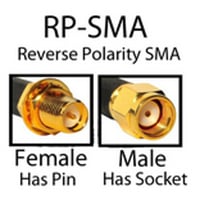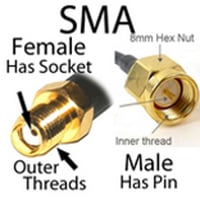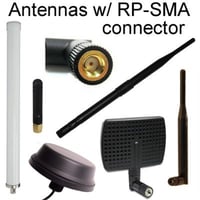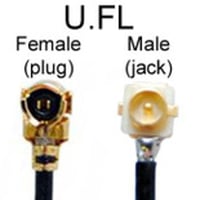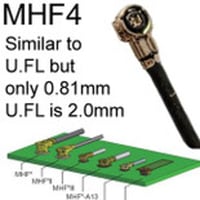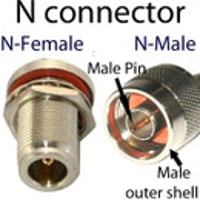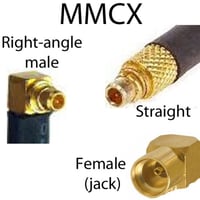RP-SMA male To RP-SMA male Cable: 40FT, 50FT, 60FT, 70FT, 80FT
- SKU:
- RSm40ftRSm
- Availability:
- In stock
- Weight:
- 3.36 LBS
Data Alliance
1 Review
-
Damn thinks works
i had bought a cheap thin cable for a 60 ft run, and not only did the cable fail but the single loss was so bad we had a better signal before we moved the antenna closer. No Kidding. This cable is a beast. its thicker then I gave it credit for. Thicker than an RG6 for example. it doesnt like to turn corners when you pull runs, so keep this in mind. I have to pull the whole run to the spot it had to turn and then have someone feed it around the corner and it was fine. Crimped great. Good connectors. Tested signal loss is almost non-existent. Wasn't cheap... but worth the ability to get a second antenna 50ft away from the source (powered up in the drop ceiling where no one even sees it) - way easier then managing the wifi extenders which create so many problems and then devices jumping back and forth ip's. This is the best solution for drop ceiling clients.
RP-SMA male To RP-SMA male Cable
Other lengths of this RPSMA male-to-male antenna cable: Many length options
- Both ends have an RP-SMA male connector.
- The Gold-Plated Brass connectors have a diameter of 15mm and 'flats' on two sides. These 'flats' are designed to help secure them in a port and prevent them from turning, ensuring a stable connection.
- The Nickel-Plated Connectors have a diameter of 11mm.
- Nickel-plated brass provides the most corrosion-resistant protection for RF connectors. On this page, you can read more about nickel-plated and gold-plated brass for corrosion/rust prevention.
- See other lengths of RP-SMA male-to-male cables: 3-inch to 30-inch, 1-meter, 2m, 3m, 4.5m, 6m, 9m, 40ft, 50ft, 60ft.
- The length refers to the cable size between the connectors (not including the connectors).
- Designed to connect devices with RP-SMA female interfaces, our RP-SMA male-to-male cable is versatile enough to connect antennas, antenna cables, and a wide range of wireless devices.For coaxial extension (for better antenna positioning), coaxial interface conversion, and coax retrofit applications.
- Our RP-SMA connectors are meticulously soldered, ensuring a high-quality, low-loss connection with discontinuities kept to an absolute minimum. This construction guarantees reliable performance and durability. Low-loss cable: Cable is LMR-400-equivalent equivalent:
- Double-shielded, low signal loss, and very flexible/easily bendable coax with black jacket (200-series is much more flexible than 400-series). The double-shielding is a significant factor in the higher quality of this cable, which translates into a lower loss (less attenuation) and, thus, better performance.
- They are rated for outdoor use and suitable for indoor use.
- The LMR-400-equivalent cable type is equivalent or better than the LMR-400: It has the same or better signal-loss-per-meter and flexibility as LMR400 and less attenuation (less signal loss). The cable is equivalent to LMR-400 in thickness.
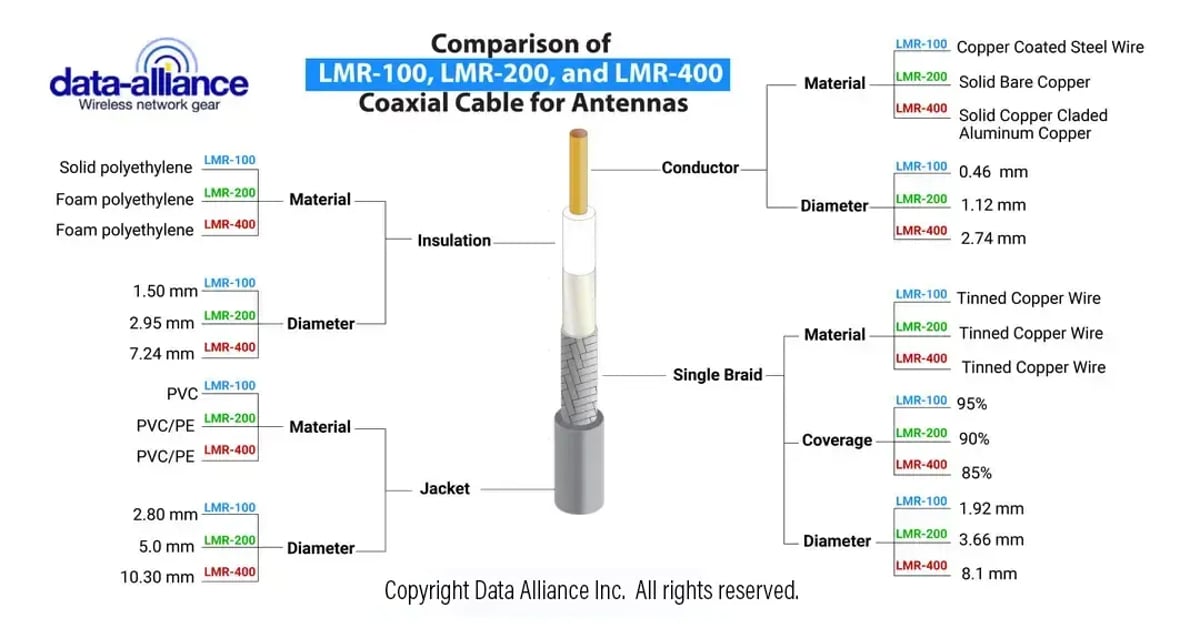
Our 400-series coax and cable assembly is designed to operate flawlessly in a wide temperature range, from -31 F to +203 F (-35 C to +95 C), showcasing their versatility and reliability in diverse environments.
Compatibility with wireless applications:
- All WiFi standards: 2.4GHz and 5GHz applications: Wi-Fi 6, WiFi 6E, 802.11AX, 802.11AC, 802.11N, 802.11G, 802.11B, 802.11A
- Cellular Wireless LTE / 4G, GSM / 3G WiMax, 5G: data and voice applications.
- IoT wireless, automation & Machine to Machine (M2M): Bluetooth, ZigBee, RFID, LoRa, LTE-m, NB-IoT.
- Compatible with all Helium miners used in North America, including Bobcat miners, Sensecap miners, and all other Helium LongFi miners, as are all of our antenna cables and adapters with RP-SMA-male connectors
Our RP-SMA antenna cable's range of frequency band compatibility (from 0GHz to 18GHz), consistently low broadband VSWR, and impedance matching to 50 Ohm cables make them compatible and compliant for all the above applications.
- Rest assured, our product is fully compliant with industry standards, including ROHS 3 and REACH, ensuring it meets the strict regulations regarding the content of heavy metals and toxic materials.
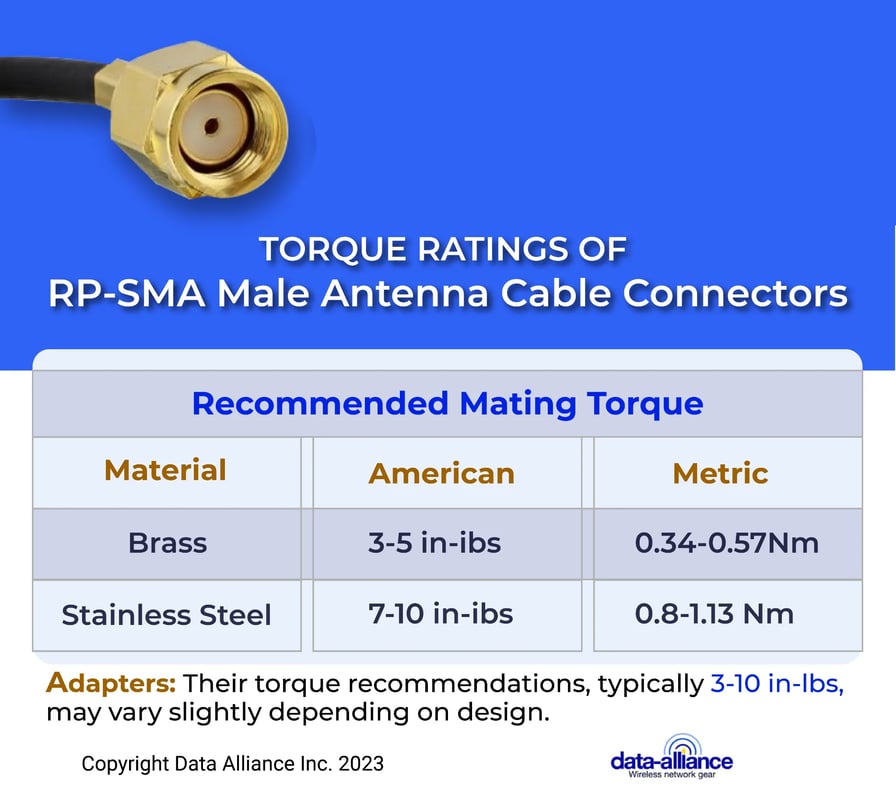
RP-SMA Connector Characteristics and Details
- RP SMA Connector Material Composition
- RP SMA Features and Key Information
- RP SMA Dimensions
- RP-SMA Gender Determination: Key PointsRP-SMA gender is counter-intuitive: Please observe the picture & note it is correct.
- The gender refers to the pins inside--not the threads. RP-SMA male has threads on the inside.
- Unique Feature of RP-SMA Male: It has a socket inside, not a pin, due to the 'Reverse Polarity' concept. This means the socket/pin configuration is female when it appears male, and vice versa.
- More details regarding RP-SMA gender determination.
RELATED PRODUCTS
- RP-SMA male-to-male antenna cables
- Page about RP-SMA cables and adapters
- RP-SMA adapters
- RP-SMA right angle adapters and cables: cables w/ RP-SMA connectors w/ right-angle & bulkhead nut & washer for the female connector
- RP-SMA extension cables

